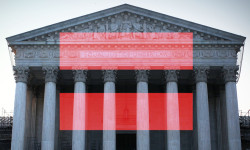DOMA - Interpreting the Supreme Court's Decision in Hollingsworth v. Perry
Today the Supreme Court released two opinions with significant impact on the on-going same-sex marriage debate. The Court's decision in U.S. v. Windsor (declaring unconstitutional Section 3 of the Federal Defense of Marriage Act, which excluded same-sex couples from the Federal definition of "spouses", even if that marriage was valid under state law) is a fairly straightforward victory for proponents of marriage equality.1 In Hollingsworth, the Court disappointed hopeful marriage equality activists by deciding the case on Federal principles of standing, rather than announcing a sweeping constitutional right to marriage for same-sex couples.2 However, a careful examination of the both opinions reveals that proponents of marriage equality may be closer than ever to a declaration of a constitutional right to marriage for same-sex couples.
To understand the long-term impact of Hollingsworth v. Perry, it is helpful to briefly recount the case's procedural history. In 2008, the California Supreme Court declared restricting "marriage" to opposite-sex couples only violated the equal protection requirements of the California Constitution.3 Later that year, California voters narrowly passed a ballot initiative, Proposition 8, which amended the California Constitution to permit recognition of only opposite-sex marriages.4
The present case arises from a challenge to Proposition 8, brought in Federal Court by two California same-sex couples who wished to marry, arguing that the ballot measure violated the Due Process and Equal Protection Clauses of the Fourteenth Amendment to the Federal Constitution.5 California's Governor and attorney general were hrefd defendants, who participated in the District Court proceedings by defending the constitutionality of the law. The District Court held Proposition 8 unconstitutional and permanently enjoined enforcement of the law.6
California's Governor and attorney general declined to appeal the District Court's ruling, but the official proponents of Proposition 8 did.7 This is where it gets really complicated. The Ninth Circuit Court of Appeals, concerned over the group's standing to defend the law, certified a question to the California Supreme Court: whether the proponents had either a particularized (individual) interest in the case or the authority to assert the State's interest in the initiative sufficient to enable them to defend the initiative in lieu of the State.8 The California Supreme Court did not address whether the proponents had a particularized interest, which would ultimately prove fatal, but concluded that California Law allowed the proponents to step in the shoes of the State to defend the initiative. The Ninth Circuit concluded the proponents had standing under Federal law, relying largely on the California Supreme Court's answer, and affirmed the District Court's invalidation of Proposition 8.9
The Supreme Court overturned the ruling of the Ninth Circuit, declaring that it did not have the power to take the appeal because the proponents did not have standing under Federal law to defend the law. 10 In order for a federal court (here, the Ninth Circuit because the State had participated in the District Court proceedings) to have federal Constitutional authority to settle a dispute, the litigant before the court must demonstrate that he or she has "suffered a concrete and particularized injury that is fairly traceable to the challenged conduct, and is likely to be redressed by a favorable judicial decision.11 In other words, only parties who are personally and individually affected by an issue may bring that issue to a federal court for decision. Without this requirement, writes Justice Roberts, those with political agendas or keen interests in an issue would use the courts as a policy-making shortcut.12 Similarly, the proponents could not be "agents" of the State because there was no right of the State, or anyone else for that matter, to control the proponents, an essential feature of agency law.13 The Supreme Court concluded the Ninth Circuit did not have jurisdiction to consider the appeal, and remanded the case with instructions to dismiss for lack of jurisdiction.14
So, what does this mean? For starters, there is a constitutional right to same-sex marriage in California, by virtue of the District Court finding Proposition 8 unconstitutional. But more importantly, the Court went to great pains to leave undisturbed a finding that restricting marriage only to opposite-sex couples violates the Due Process and Equal Protection Clauses of the Fourteenth Amendment to the Federal constitution, all the while emphasizing how important it is that these questions be decided in accordance with constitutional principles. It is also worth noting that the dissent in Hollingsworth was authored by Justice Kennedy, who is universally regarded as the "swing vote" in the Court's ideological divide. His willingness to find standing here (thereby reaching the merits of the case) on the same day he authored the majority opinion in the Windsor indicates he would side with marriage equality when and if it is "properly" before the Court. Therefore, supporters of same-sex marriage may have lost the "battle" but today's cases suggest they are closer than ever to winning the "war".
1. U.S. v. Windsor, 570 U.S. ___ (2013), accessible here.
2. Hollingsworth et al. v. Perry et al., 570 U.S. ____ (2013)
3. In re Marriage Cases, 43 Cal. 4th 757, 183 (2008)
4. Cal. Const. Art. I, §75
5. Hollingsworth, 570 U.S. at p.3.
6. Perry v. Schwarzenegger, Civ. Np. 10-16696 (CA9, 2010) p.2.
7. Hollingsworth, 570 U.S. at p.3.
8. Hollingsworth, 570 U.S. at p.4; Perry v. Schwarzenegger, 628 F. 3d 1191, 1193 (2011).
9. Hollingsworth, 570 U.S. at p. 4-5; Perry v. Brown, 52 Cal. 4th 1116, 1127 (2011).
10. Hollingsworth et al. v. Perry et al., 570 U.S. ____ (2013)
11. Hollingsworth, 570 U.S. at p. 5-6 (internal citations omitted)
12. Hollingsworth, 570 U.S. at p. 2,
13. Hollingsworth, 570 U.S. at p. 14-15.
14. Hollingsworth, 570 U.S. at p. 17.




